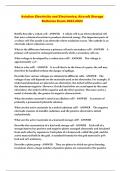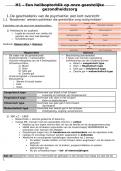Other
Evolution Summary
- Course
- Life Sciences
- Institution
- St Mary\'s School, Waverley, Johannesburg
These notes cover evolution for Matric Life Sciences. They are part of the IEB curriculum and were made in 2021. They contain images and examples. They include notes on Darwin and Lamarck's theories, examples of inbreeding & outbreeding, allopatric and sympatric speciation as well as natural and ...
[Show more]












